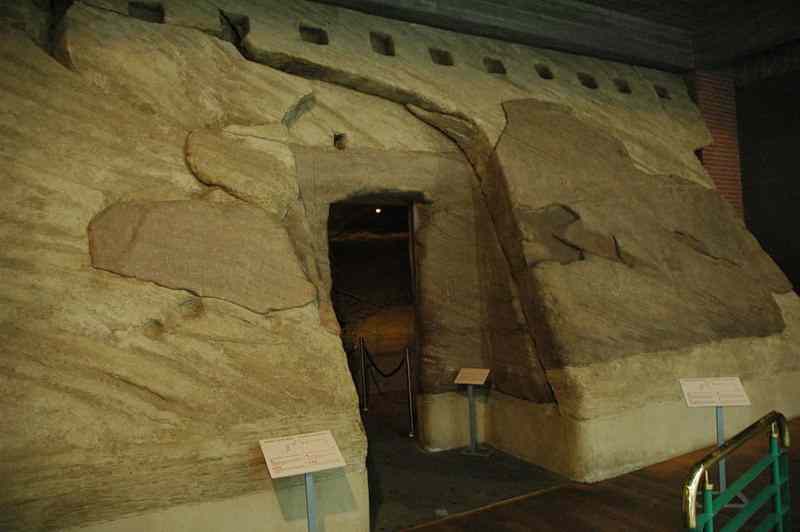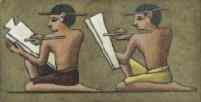AscendingPassage.com
See the: Egyptian Secrets Library

Ellesyia Temple - Fereyg
Ellesyia (El Lessiya, Ellesija) is a small temple cut into the rock at the time of Tuthmosis III (Eighteenth Dynasty, ruled 1479-1425 BC), in honor of the local Nubian falcon god Dedwen (Dedoun), considered by the Egyptians to be a form of Horus. Dedwen is provider of incense, among other atributes.
The temple of El Lessiya was flooded by the first Aswan Dam, built in 1902. All the colors were lost and the wall reliefs were severely damaged. In the 1960's, as part of the international rescue of Nubian monuments, El Lessiya was cut from the rock and re-assembled in the Egyptian Museum of Turin, Italy (Museo Egizio), a gift from the people of Egypt.

Art from el Lessiya Temple
by Ernst Weidenbach, 1842 - 1845.

el Lessiya Temple at Fereyg
Edited excerpt from: Travels in Nubia
by John Lewis Burckhardt
Published in 1819.
March 5th, 1813.
After a half hour camel's ride we arrived at the
Akabe of Fereyg, or the place where the mountain
separates that Wady from its southern neighbor. I sent my guide
with the camels over the mountain, and following a narrow
foot-path along the almost perpendicular shore for an hour, I arrived at an ancient temple hewn out of
the rocky side of the mountain. No other road leads up to it but
this dangerous foot-path, neither are there any traces of an
ancient road. I entered through a high narrow gateway into a small
Egyptian temple, cut entirely out of the rock, and in as perfect a
state of preservation as when first finished.

More art from el Lessiya Temple by Ernst Weidenbach, 1842 - 1845.
It consists of a
cella, ten paces in length and seven in width, and about twelve
feet high. Within it are four columns with Egyptian capitals. On
either side of the cella is a room which receives light
only by the entrance. Low stone
benches run along the walls of the cella, a peculiarity which I had
not seen in any other Egyptian temple. There is an ascent by three
low steps from the cella into the adytum, in which is a deep
sepulchral excavation, there is also a similar but smaller one in
the cella itself. The walls both of the cella and adytum are
covered with mystic sculptures in the usual style, but there are
none in the two side chambers. The Greeks had converted this temple
into a church, and had plastered the walls white, to receive their
paintings, many of which still remain.

El Lessiya Temple interior,
Both photographs at the Turin Museum,
by David Schmid -CreativeCommons.
At the end
of three hours we passed a number of tumuli,
or barrows of various sizes, covered with sand. I counted about
twenty-five within a mile and a half. The regularity
of their shape, which is exactly the same as that of the tumuli in
the Syrian deserts and the plain of Troy, makes it almost certain
that they are artificial.
NEXT CHAPTER
Edited excerpt from: Travels in Nubia
by John Lewis Burckhardt
Published in 1819.

Countless beautiful 19th century images of ancient Egypt
and 75 pages of architecture, art and mystery
are linked from the library page:

The Egyptian Secrets Library









